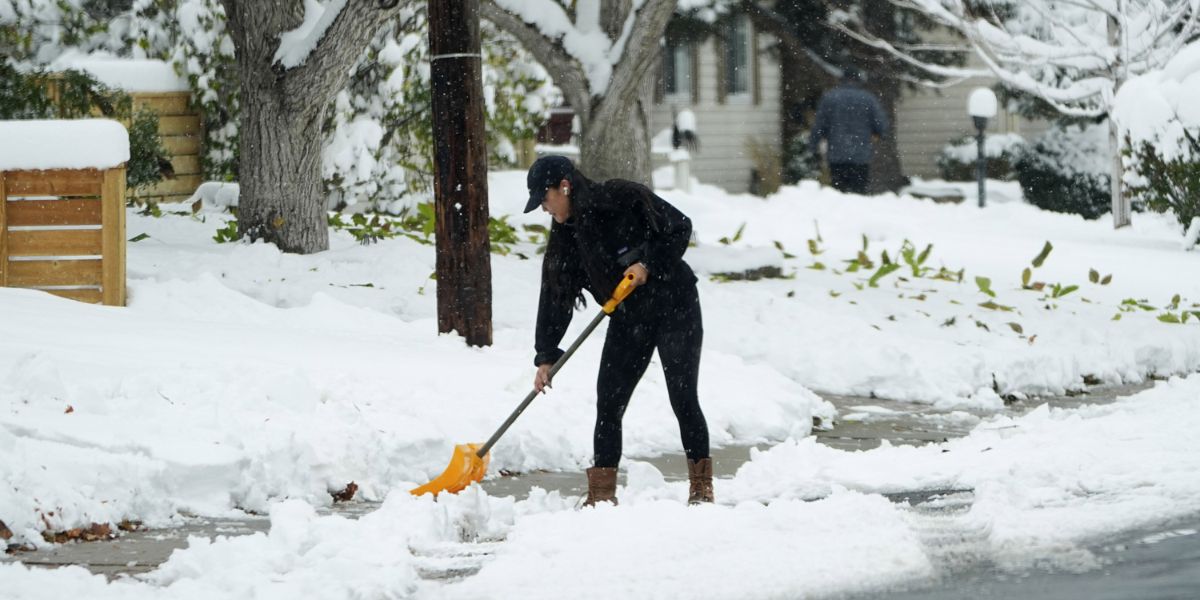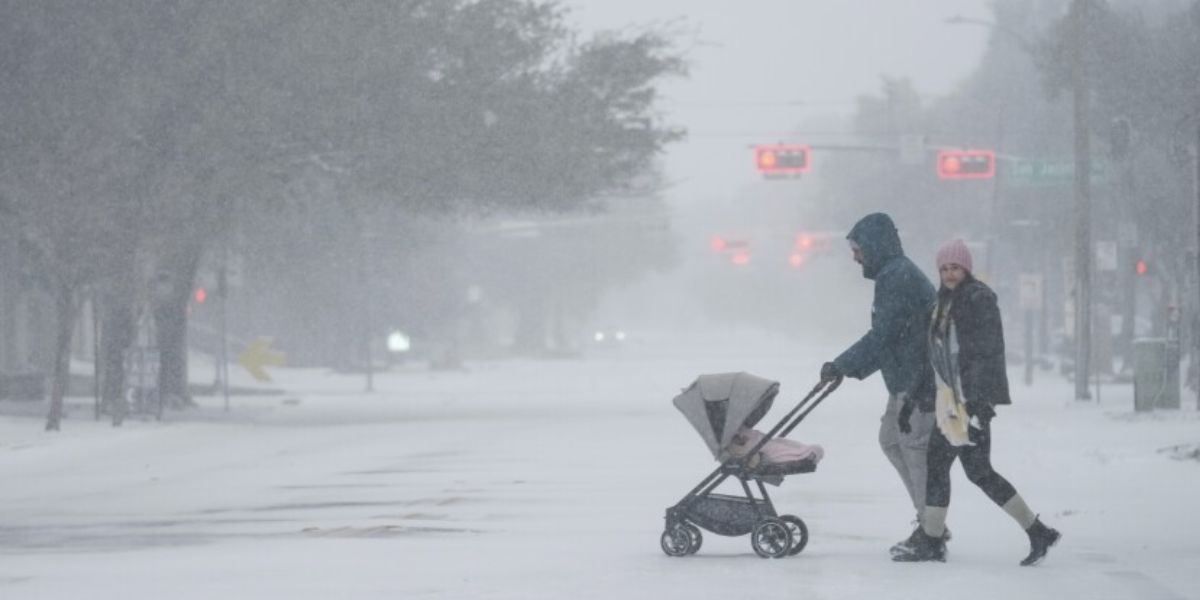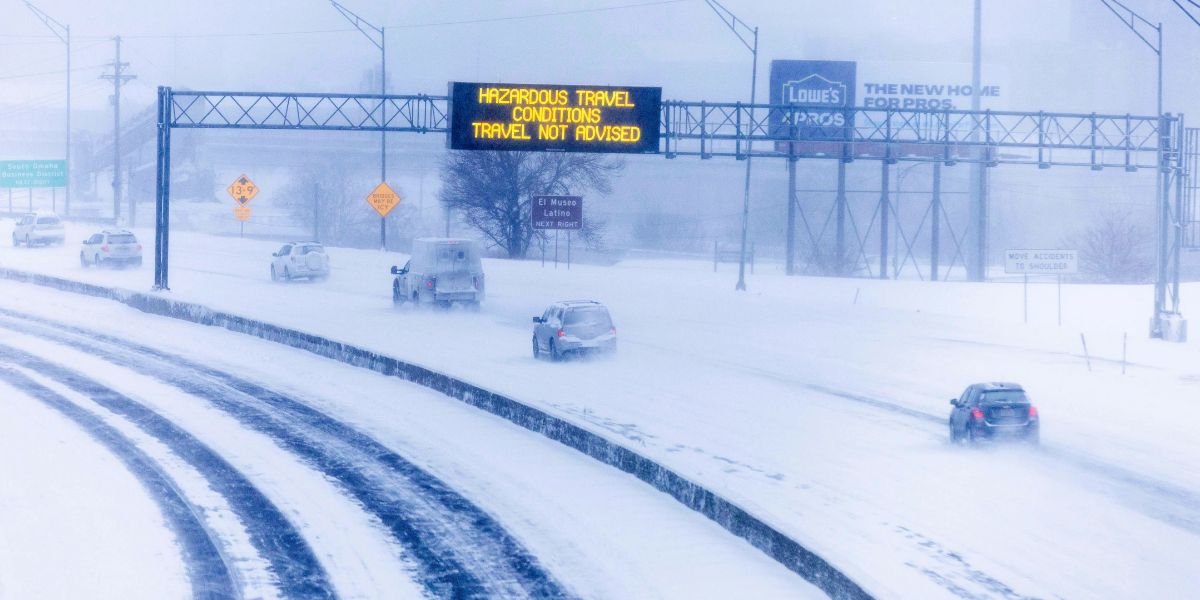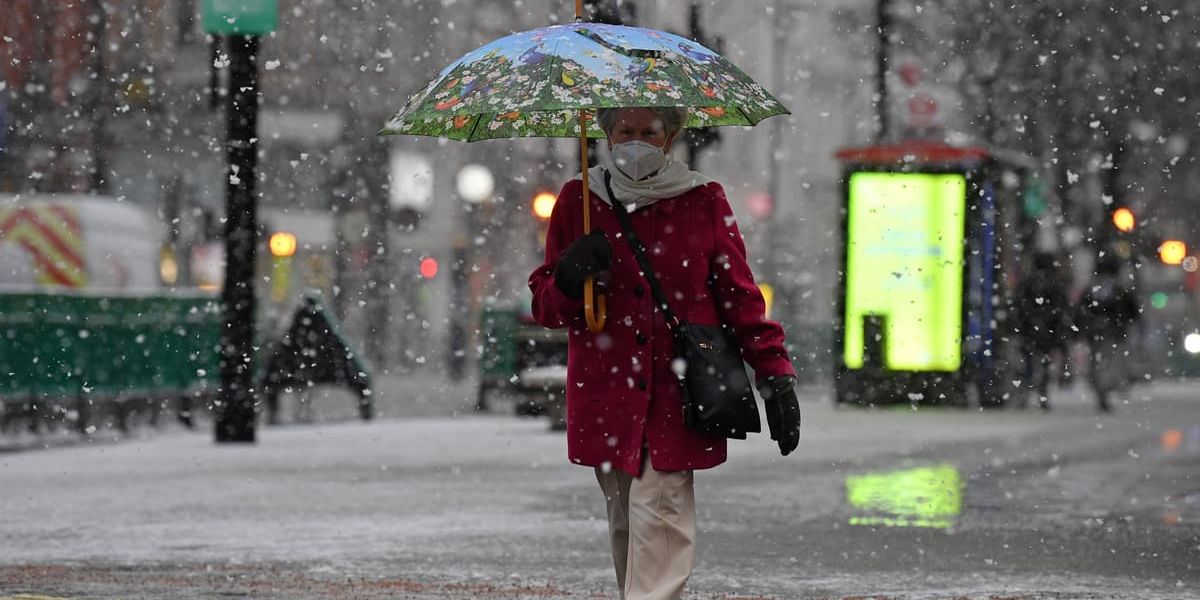Twelve states are under a winter storm warning, and Saturday could bring up to 48 inches of snow.
Particularly for susceptible populations like older folks and infants, freezing temperatures can be harmful to one’s health. Winter storms may result in power outages, and snow can cause traffic disruptions and hazardous driving conditions.
Twelve states—including Washington, Colorado, Idaho, California, Utah, Nevada, Oregon, Montana, Wyoming, Minnesota, Alaska, and Michigan—have issued winter storm warnings and advisories in anticipation of a strong storm that is predicted to bring dangerous conditions and a lot of snow.
The National Weather Service (NWS) stated that up to 48 inches of snow might accumulate in Wyoming’s highest peaks, while projected amounts varied by state.
The NWS also cautioned that the freezing temperatures in Wyoming might cause hypothermia and frostbite on exposed skin.
The service issued warnings that frostbite on exposed skin could result from “dangerously” severe wind chills in Alaska and that blizzard conditions could drastically impair visibility.
The West Slopes of the North Cascades and the adjacent regions, such as Packwood and Stevens Pass, are under a winter storm warning in the Pacific Northwest, where snow accumulations of 4 to 8 inches are anticipated above 3,000 feet.
The Central and Southern Cascades of Oregon, as well as the Upper Slopes of the Eastern Washington Cascades, are also under similar warnings, with snow totals of up to 30 inches in certain areas.
Significant snow accumulations are anticipated in California, Nevada, and Montana, where further winter storm warnings are in effect.
Areas in Northern California, especially the Sierra Nevada, are preparing for heavy, wet snow that might result in power outages due to fallen trees, and the Ruby Mountains and East Humboldt Range in Nevada could receive up to 27 inches of snow by Monday morning.
Additionally, Montana’s Missoula and Bitterroot Valleys are under a Winter Storm Warning through Saturday at 5 p.m. MST, making driving challenging due to a combination of precipitation, ice, and snow squalls.
Travel may become almost difficult due to snow and ice buildup, particularly on Friday nights. Additionally, there is a Winter Storm Watch in effect from Sunday through Tuesday night, which could bring up to 8 inches of snow.
Hazardous circumstances are also present in the South Washington Cascades and the North Oregon Coast Range to the west.
With snow accumulations of 8 to 14 inches predicted above 2,500 feet and wind gusts of up to 45 mph, a Winter Storm Warning is in force until 4 a.m. PST on Sunday.
People who live in the impacted areas are urged to refrain from needless travel and, if they must, to exercise great caution.
Winter emergency kits, which should contain blankets, food, and flashlights, should be kept in cars. In order to keep informed and guarantee their safety, people should also check local forecasts and road conditions prior to leaving.
Salmonella Concerns Lead to Major Recall of Popular Dog Food Brands
“Heavy snow is forecast throughout much of the higher terrain of the West, with lighter low elevation snow also possible for parts of the Pacific Northwest,” the NWS Weather Prediction Center stated on X.
“The Missoula Police Department has issued an emergency travel only due to deteriorating road conditions,” the NWS Missoula posted on X.
The winter weather advisory for the Bitterroot Valley and Missoula has been elevated to a winter storm warning due to ice buildup during the morning.
While some weather warnings will only be in effect for the weekend, others will be in effect until Tuesday evening.
The NWS frequently posts updates on its website, so forecasts are subject to change.




